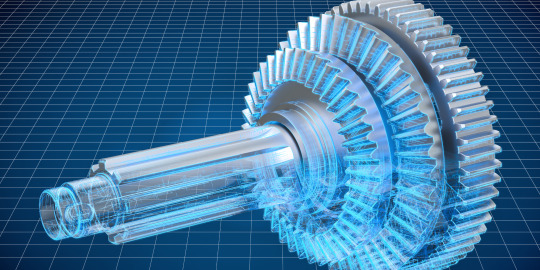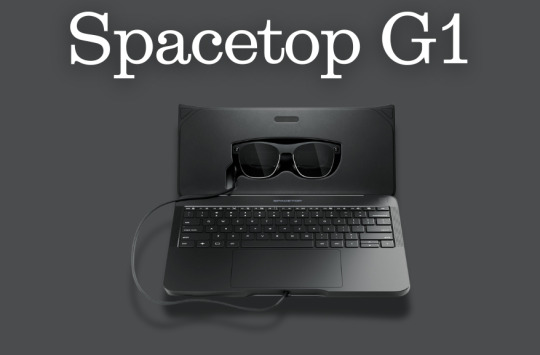#Augmented Reality for Product Visualization
Explore tagged Tumblr posts
Text
https://www.zupyak.com/p/4006337/t/unleash-the-benefits-of-using-ar-for-product-visualization
Unleash the Benefits of Using AR for Product Visualization
In e-commerce, augmented reality opens up new perspectives for organizations that want to push the boundaries of what's possible when it comes to designing superior user experiences. The biggest benefit of AR & Product Visualization for e-commerce businesses is improved engagement with your consumers. And ar3d.studio, your best partner for Augmented Reality for Product Visualization. Augmented reality is reshaping the way we interact with products, blurring the lines between the physical and digital worlds. From increasing customer engagement and satisfaction to providing realistic product demonstrations and personalized shopping experiences, AR offers an array of benefits for both consumers and businesses. As technology continues to evolve, embracing AR & Product Visualization can undoubtedly provide a competitive edge in a world driven by innovation and enhanced user experiences. For more information:- please email us at: [email protected]
0 notes
Text
The Impact of 3D Modeling for 3D Printing on Custom Manufacturing

Impact of 3D Modeling for 3D Printing
In today's fast-paced and hyper-personalized world, businesses and consumers increasingly seek custom-made products tailored to their unique needs. At the core of this shift lies the powerful combination of 3D modeling for 3D printing and custom manufacturing. This pairing transforms traditional production processes and drives innovation across various industries—from medical devices and consumer products to aerospace and architecture.
What is 3D Modeling for 3D Printing?
3D modeling for 3D printing involves creating a digital representation of a physical object that can be directly converted into a printable format, usually an STL or OBJ file. These models are created using professional 3D Modeling Services and are designed with precision to meet the functional, aesthetic, and mechanical requirements of the final product.
By leveraging 3D product modeling services, manufacturers can develop complex geometries, internal structures, and intricate details that would be impossible or too expensive to achieve through traditional methods.
The Rise of Custom Manufacturing
Thanks to 3D Modeling for 3D Printing, companies can now create prototypes, test ideas, and manufacture small batches of custom products with speed and accuracy.
How 3D Modeling Empowers Customization
1. Rapid Prototyping
One of the most significant impacts of 3D Model Augmented Reality is in rapid prototyping. A 3D model maker for a 3D printer can quickly convert a concept into a tangible prototype. This enables designers and engineers to identify flaws early, make necessary adjustments, and improve product quality without incurring high tooling costs.
2. Personalization at Scale
With the help of 3D modeling services, manufacturers can offer customized products at scale. Whether it’s personalized dental aligners, custom phone cases, or ergonomically designed handles, 3D product modeling services make it possible to adapt each product to the specific measurements or preferences of an individual customer.
3. Enhanced Product Complexity
However, 3D Modeling for 3D Printing removes these limitations. Designers can now create highly complex and lightweight structures—such as lattice supports or internal channels—without additional production steps.
Integration with AR and VR Technologies
The impact of 3D modeling extends beyond physical products. Emerging technologies like 3D Model Augmented Reality (AR) and virtual reality (VR) are redefining how models are visualized, tested, and even marketed.
AR 3D Modeling for Visualization
AR 3D Modeling enables businesses to visualize digital objects in the real world before they’re manufactured. This helps clients understand product dimensions, placement, and aesthetics with greater clarity. For instance, using AR Product Visualization, a furniture manufacturer can show how a custom-made table would look in a customer’s living room before it is printed.
VR 3D Modeling for Simulation
On the other hand, VR 3D Modeling allows designers to immerse themselves in a virtual environment to test their designs. Whether it’s evaluating the usability of a custom vehicle dashboard or the ergonomics of a tool handle, Virtual Reality 3D Modeling provides a hands-on approach to refining product designs before printing.
Applications of 3D Modeling for 3D Printing in Custom Manufacturing
1. Healthcare & Medical Devices
From prosthetics to dental implants, the healthcare sector has embraced 3D modeling for 3D printing to provide customized solutions for patients. Using advanced 3D product modeling services, prosthetic limbs can be tailored to an individual's anatomy, ensuring better comfort and functionality.
2. Automotive & Aerospace
High-performance industries like automotive and aerospace rely on 3D Model Maker for 3D Printer to create lightweight yet durable parts. This includes everything from custom brackets and housings to functional interior parts designed for specific models or pilots.
3. Consumer Products
In fashion, jewelry, and home decor, 3D Modeling Services empower designers to offer one-of-a-kind products. AR features also enhance the shopping experience. For example, AR Product Visualization allows customers to virtually “try on” glasses or see how a custom ring would look on their hand.
4. Industrial Manufacturing
In industrial settings, custom jigs, fixtures, and machine parts can be designed using 3D modeling services to match specific production lines or machinery.
3D Modeling for 3D Printing
Cost Efficiency
Instead of investing in expensive molds, they can directly print parts as needed, even in small quantities.
Speed to Market
The design-to-production cycle is significantly shortened. Changes can be made instantly in the 3D model and printed on the same day, ensuring faster product development and launch.
Sustainability
Custom manufacturing using 3D product modeling services produces less waste compared to traditional subtractive methods. Materials are only used where needed, and designs can be optimized for minimal environmental impact.
Design Flexibility
3D Modeling Services offer unprecedented design freedom. Whether for organic shapes, custom engravings, or complex moving parts, the possibilities are virtually limitless.
The Role of Professional 3D Modeling Services
While 3D printing hardware is more accessible than ever, the quality of output still depends on the quality of the digital model. That's why professional 3D modeling services play a vital role in custom manufacturing. These services ensure models are designed with the appropriate tolerances, wall thickness, and structural integrity needed for specific materials and 3D printing methods.
Whether you need a 3D Model Maker for 3D Printer, an expert in AR 3D Modeling, or a specialist in VR 3D Modeling, partnering with a skilled team can dramatically improve the performance, accuracy, and marketability of your custom product.
Future Outlook
As 3D product modeling services continue to evolve and integrate AI-driven automation, the process of turning ideas into personalized products will become faster, cheaper, and more intelligent.
We are also seeing growth in cloud-based platforms where users can design, visualize, and order custom products from the comfort of their homes. With real-time AR Product Visualization and Virtual Reality 3D Modeling, the entire production lifecycle—from design to delivery—is being redefined.
Conclusion
3D Modeling for 3D Printing is not just a technological trend—it is a foundational element driving the future of custom manufacturing. From rapid prototyping and personalized medical devices to immersive AR/VR product visualization, the impact of this digital-to-physical workflow is profound and far-reaching.
Businesses looking to stay ahead in a competitive marketplace must embrace 3D Modeling Services, explore AR 3D Modeling for consumer engagement, and tap into 3D product modeling services for tailored production. Whether you're a startup, a global manufacturer, or a creative entrepreneur, the fusion of 3D modeling and 3D printing offers a gateway to limitless customization.
#3D Modeling Services#AR 3D Modeling#3D product modeling services#3D Model Augmented Reality#AR Product Visualization#VR 3D Modeling#Virtual Reality 3D Modeling#3D Modeling for 3D Printing#3D Model Maker for 3D Printer
0 notes
Text
Revolutionize Your Enterprise with Simulanis VR & AR
The future of business is immersive, interactive, and driven by technology. Enterprises that embrace Virtual Reality (VR) and Augmented Reality (AR) are unlocking new levels of efficiency, engagement, and innovation. At Simulanis, we are revolutionizing industries with cutting-edge VR and AR solutions that transform workforce training, customer experiences, and operational workflows.

Why VR & AR Are Essential for Enterprise Growth?
🔹 Next-Generation Employee Training Traditional training methods are no longer enough. Simulanis VR training solutions create realistic, hands-on virtual simulations, allowing employees to practice in a risk-free environment. AR-assisted learning further enhances training by providing real-time digital overlays and interactive guidance.
🔹 Enhanced Customer Engagement & Product Visualization Enterprises can showcase products and services in 3D, offering customers an immersive and interactive buying experience. VR-powered virtual showrooms and AR product visualization tools help businesses boost sales and brand loyalty.
🔹 Operational Efficiency & Safety Improvements From industrial safety training to real-time AR-powered remote assistance, immersive technologies help enterprises reduce risks, improve accuracy, and enhance productivity. AR smart glasses and VR simulations empower teams to perform complex tasks with greater precision.
🔹 Immersive Collaboration & Remote Work Solutions With VR-powered virtual workspaces, businesses can conduct meetings, training sessions, and brainstorming workshops in a realistic, collaborative digital environment. This is the future of hybrid work models and global enterprise connectivity.
🔹 Seamless Integration with the Metaverse The Metaverse is redefining business interaction, allowing enterprises to build virtual spaces, host digital events, and create next-level customer experiences. Simulanis provides tailored Metaverse solutions that help businesses stand out in the digital landscape.
Industries Benefiting from Simulanis VR & AR Solutions
✅ Manufacturing & Industrial Training – VR-based process training, equipment simulations, and AR maintenance guides. ✅ Healthcare & Medical Training – Surgical simulations, medical procedures training, and AR-assisted diagnostics. ✅ Retail & E-Commerce – Virtual try-ons, 3D product showcases, and interactive shopping experiences. ✅ Education & Corporate Learning – Engaging VR classrooms, AR-based learning modules, and enterprise e-learning solutions. ✅ Real Estate & Architecture – Immersive virtual property tours, 3D architectural visualizations, and interactive design planning. ✅ Automotive & Engineering – VR for vehicle prototyping, driver training, and AR-powered repair assistance.
Why Choose Simulanis?
At Simulanis, we are pioneers in VR, AR, and Metaverse technology, helping businesses unlock the full potential of immersive solutions. Our expertise in Extended Reality (XR) solutions ensures that enterprises can streamline operations, enhance customer engagement, and train employees more effectively.
🚀 The future of enterprise innovation starts now! 🚀
📩 Get in touch with Simulanis today and explore how VR & AR can transform your business!
Visit Website: simulanis.com
#Virtual Reality (VR)#Augmented Reality (AR)#Mixed Reality (MR)#Metaverse Solutions#Extended Reality (XR)#Enterprise VR Solutions#AR for Business#Immersive Technology#Future of Work#Digital Transformation#VR Training Programs#AR Training Modules#Industrial VR Training#Corporate Learning with XR#3D Virtual Simulations#AR Product Visualization#Workforce Training Solutions#Metaverse for Enterprises#Remote Work with VR#AI-Powered AR/VR#Smart Manufacturing with XR#VR for Employee Development#Augmented Reality for Retail#Virtual Showrooms#AR Maintenance & Support#VR in Healthcare & Medical Training#Immersive Learning Solutions#AR/VR for Real Estate#Enterprise Innovation with XR
0 notes
Text
How 3D Modeling Services Are Impacting Product Design in 2024

3D modeling services have become essential tools for creating innovative and functional products. With advancements in technology and the integration of augmented reality (AR) and virtual reality (VR), 3D product modeling services have fundamentally transformed how companies design, visualize, and bring products to life. In 2024, the role of 3D modeling in product development is more significant than ever, reshaping industries with its capacity for enhanced visualization, streamlined processes, and precise design execution.
The Power of 3D Product Visualization
One of the most impactful aspects of 3D modeling services is their ability to provide 3D product visualization, allowing designers, clients, and stakeholders to see a highly accurate digital representation of the product before it is physically created. This powerful visualization tool helps bridge the gap between imagination and reality. Incorporating 3D product visualization into the design process is a game-changer, allowing businesses to showcase their ideas dynamically and engagingly that traditional 2D sketches cannot match.
Precision and Innovation in 3D Product Modeling Services
The precision offered by 3D modeling services is unmatched, allowing for intricate detailing and accurate representation of complex features. This level of precision is crucial in modern product design, where even the smallest details can significantly impact functionality and user experience.
Achieving Precision with 3D Modeling
Detailed Customization: 3D modeling software allows designers to create highly detailed and customized parts, tailored specifically to meet the needs of the product. This customization extends to textures, materials, and structural elements, providing a comprehensive view of the final product.
Integration with Emerging Technologies: The synergy between 3D modeling services and technologies like augmented reality models and 3D printing has opened new possibilities in design and prototyping. AR models allow for a realistic overlay of the product in a real-world setting, enabling designers to evaluate how the product interacts with its environment before production.
With the integration of augmented reality models, designers can test the product's usability in a virtual space, ensuring it meets both design and user expectations.
The Synergy Between 3D Modeling and Emerging Technologies
As technology advances, 3D product modeling services are increasingly paired with innovations like 3D printing and AR/VR, further enhancing the design and development process.
3D Printing and Rapid Prototyping
The combination of 3D modeling services and 3D printing has revolutionized prototyping. Digital models can be directly converted into physical prototypes, allowing for rapid testing and iterative refinements. This capability:
Speeds Up Prototyping: Creating a physical prototype from a digital model is faster and more efficient, enabling quick testing of design concepts.
Enables Complex Designs: 3D printing can handle intricate geometries that traditional manufacturing might find challenging, allowing designers to push the boundaries of what’s possible.
Augmented Reality (AR) Models
The use of augmented reality models is becoming more widespread in product design. AR technology allows designers and clients to view the 3D model of a product in its intended environment using smartphones or AR glasses.
Real-World Visualization: AR models overlay the digital product onto the real world, giving a realistic preview of how it will look and fit in actual spaces.
Enhanced User Interaction: By using AR, clients can interact with the product before it’s manufactured, providing valuable feedback on design and usability.
This integration of AR and 3D product modeling services not only improves design accuracy but also offers an interactive and engaging experience for clients.
Overcoming Challenges in 3D Modeling Services
While the benefits of 3D modeling services are immense, there are challenges, such as the need for skilled professionals, high software costs, and significant computing power. However, investing in training and advanced tools can help businesses fully harness the potential of 3D modeling, paving the way for more innovative and efficient product design.
Conclusion
In 2024, 3D modeling services are more than just a design tool; they are a vital component of modern product development, driving innovation and efficiency. By adopting these services, companies can leverage enhanced 3D product visualization, streamlined design processes, and precise augmented reality models to create products that meet the highest standards of quality and functionality. As technology continues to evolve, the future of product design looks promising, with 3D product modeling services at the forefront of this exciting transformation.
0 notes
Text
#AR#VR#Augmented Reality#3d product modeling#3d product visualization#3d product design#Engineering Visualization#Mechanical Engineering#Architectural Visualization#Automotive Engineering#Engineering Trends#Visualization Technologies#Design Optimization
1 note
·
View note
Text
Revolutionizing Product Presentation: Avataar's Mastery in 3D Product Animation
Unlock the future of immersive product experiences with Avataar. Explore our expertise in 3D product animation, seamlessly blending creativity and technology to elevate your brand's visual storytelling. Dive into a world where every product comes to life, captivating your audience like never before.
#3d#ar#ai#3d product animation services#3d product modeling#3d product visualization#3d product design#3d product rendering#augmented reality
0 notes
Text
Unitedprint.com Collaborates With Pexels.com

Unitedprint.com, a prominent e-commerce technology company, has recently unveiled several innovative enhancements for its brands, Easyprint.com and print24.com. These updates include the launch of interactive 2D and 3D product preview visualizations, a strategic partnership with Pexels.com (a subsidiary of Canva.com), and the availability of more than 12 million premium design templates for its users.
Partnership with Pexels.com:
Unitedprint.com is collaborating closely with Pexels.com, a Canva.com company, to expand the offerings of Easyprint. This partnership grants Easyprint access to 3 million royalty-free stock images, which users can utilize for their individual projects without any cost or restrictions. Fabian Frenzel, the CEO of Unitedprint.com SE, emphasizes that this collaboration empowers customers to elevate their creativity to new heights at no expense.
Over 12 Million Design Templates:
Easyprint.com now offers a vast library of over 12 million free design templates. Users have the freedom to use these templates not only for traditional print products like flyers, postcards, and business cards but also for a wide range of digital products. Whether it's designing digital invitations, greeting cards, or social media posts, the options are virtually limitless.
Read More - https://bit.ly/3ESncdj
#Unitedprint.com#Pexels.com#Augmented Reality (AR)#3D Visuals#Digital Retail Platforms#2D And 3D Product Preview Visualisations
0 notes
Text
Unveiling the Power of 3D Visualization: Revolutionizing Engineering Applications

In the world of engineering, complex concepts and intricate designs often require effective means of communication to convey ideas, identify potential issues, and foster innovation. 3D visualization has emerged as a powerful tool that not only aids in comprehending intricate engineering concepts but also fuels creativity and enhances collaboration among multidisciplinary teams. This blog dives deep into the realm of 3D visualization for engineering applications, exploring its benefits, applications, and the technologies driving its evolution.
The Power of 3D Visualization
1. Enhanced Understanding: Traditional 2D drawings and diagrams can sometimes fall short in capturing the full complexity of engineering designs. 3D visualization empowers engineers, architects, and designers to create realistic and immersive representations of their ideas. This level of detail allows stakeholders to grasp concepts more easily and make informed decisions.
2. Identification of Design Flaws: One of the primary advantages of 3D visualization is its ability to identify potential design flaws before physical prototyping begins. Engineers can simulate real-world conditions, test stress points, and analyze the behavior of components in various scenarios. This process saves both time and resources that would have been wasted on rectifying issues post-construction.
3. Efficient Communication: When working on multidisciplinary projects, effective communication is essential. 3D visualization simplifies the sharing of ideas by presenting a clear visual representation of the design. This reduces the chances of misinterpretation and encourages productive discussions among team members from diverse backgrounds.
4. Innovation and Creativity: 3D visualization fosters creativity by enabling engineers to experiment with different design variations quickly. This flexibility encourages out-of-the-box thinking and exploration of unconventional ideas, leading to innovative solutions that might not have been considered otherwise.
5. Client Engagement: For projects involving clients or stakeholders who might not have technical expertise, 3D visualization serves as a bridge between complex engineering concepts and layman understanding. Clients can visualize the final product, making it easier to align their expectations with the project's goals.
Applications of 3D Visualization in Engineering
1. Architectural Visualization: In architectural engineering, 3D visualization brings blueprints to life, allowing architects to present realistic walkthroughs of structures before construction. This helps clients visualize the final appearance and make informed decisions about design elements.
2. Product Design and Prototyping: Engineers can use 3D visualization to create virtual prototypes of products, enabling them to analyze the functionality, ergonomics, and aesthetics. This process accelerates the design iteration phase and reduces the number of physical prototypes required.
3. Mechanical Engineering: For mechanical systems, 3D visualization aids in simulating motion, stress analysis, and assembly processes. Engineers can identify interferences, optimize part arrangements, and predict system behavior under different conditions.
4. Civil Engineering and Infrastructure Projects: From bridges to roadways, 3D visualization facilitates the planning and execution of large-scale infrastructure projects. Engineers can simulate traffic flow, assess environmental impacts, and optimize structural design for safety and efficiency.
5. Aerospace and Automotive Engineering: In these industries, intricate designs and high-performance requirements demand rigorous testing. 3D visualization allows engineers to simulate aerodynamics, structural integrity, and other critical factors before manufacturing.
Technologies Driving 3D Visualization
1. Computer-Aided Design (CAD): CAD software forms the foundation of 3D visualization. It enables engineers to create detailed digital models of components and systems. Modern CAD tools offer parametric design, enabling quick modifications and iterative design processes.
2. Virtual Reality (VR) and Augmented Reality (AR): VR and AR technologies enhance the immersive experience of 3D visualization. VR headsets enable users to step into a digital environment, while AR overlays digital content onto the real world, making it ideal for on-site inspections and maintenance tasks.
3. Simulation Software: Simulation tools allow engineers to analyze how a design will behave under various conditions. Finite element analysis (FEA) and computational fluid dynamics (CFD) simulations help predict stress, heat transfer, and fluid flow, enabling design optimization.
4. Rendering Engines: Rendering engines create photorealistic images from 3D models, enhancing visualization quality. These engines simulate lighting, materials, and textures, providing a lifelike representation of the design.
Future Trends and Challenges
As technology evolves, so will the field of 3D visualization for engineering applications. Here are some anticipated trends and challenges:
1. Real-time Collaboration: With the rise of cloud-based tools, engineers worldwide can collaborate on 3D models in real time. This facilitates global teamwork and accelerates project timelines.
2. Artificial Intelligence (AI) Integration: AI could enhance 3D visualization by automating design tasks, predicting failure points, and generating design alternatives based on predefined criteria.
3. Data Integration: Integrating real-time data from sensors and IoT devices into 3D models will enable engineers to monitor performance, identify anomalies, and implement preventive maintenance strategies.
4. Ethical Considerations: As 3D visualization tools become more sophisticated, ethical concerns might arise regarding the potential misuse of manipulated visualizations to deceive stakeholders or obscure design flaws.
In conclusion, 3D visualization is transforming the engineering landscape by enhancing understanding, fostering collaboration, and driving innovation. From architectural marvels to cutting-edge technological advancements, 3D visualization empowers engineers to push the boundaries of what is possible. As technology continues to advance, the future of engineering will undoubtedly be shaped by the dynamic capabilities of 3D visualization.
#3D Visualization#Engineering Visualization#CAD Software#Virtual Reality (VR)#Augmented Reality (AR)#Design Innovation#Visualization Tools#Product Design#Architectural Visualization#Mechanical Engineering#Civil Engineering#Aerospace Engineering#Automotive Engineering#Data Integration#Real-time Visualization#Engineering Trends#Visualization Technologies#Design Optimization
1 note
·
View note
Text








Reality+ (2019) - Dir. Coralie Fargeat
In an era where digital self-enhancement is becoming the norm, Reality+ delivers a sharp and timely exploration of augmented identity. Echoing the thematic core of The Substance, the film navigates the psychological and ethical dilemmas of technology-driven self-perception but offers a more hopeful resolution.
At its heart, Reality+ is a meditation on authenticity, self-worth, and the fragile boundary between illusion and reality. The protagonist, whose inner conflict unfolds with quiet intensity, is exceptionally well-cast, bringing a relatable vulnerability to the role. His journey feels organic, avoiding exaggerated melodrama in favor of a more subdued, introspective approach.
Visually, the film is striking. The scenography is sleek yet understated, evoking a near-future world that feels both familiar and unsettlingly plausible. The production design smartly balances minimalism with technological sophistication, reinforcing the film’s themes without overwhelming the narrative.
Where Reality+ truly succeeds is in its ability to provoke thought without resorting to heavy-handed moralizing. Rather than painting a purely dystopian vision, it suggests that while technology may reshape our perceptions, it does not necessarily have to strip us of our humanity. The ending, rather than leaving the audience in despair, offers a glimmer of optimism—a refreshing divergence from the genre’s more cynical tendencies.
Polished, well-acted, and thematically resonant, Reality+ is a compelling sci-fi short that lingers in the mind long after the credits roll.
#film#aesthetic#movies#reality+#coralie fargeat#the substance#cinema#art#artists on tumblr#film photography#filmedit#cinematography#filmgifs#cinephile
13 notes
·
View notes
Text
AGARTHA Aİ - DEVASA+ (4)

In an era where technology and creativity intertwine, AI design is revolutionizing the way we conceptualize and create across various industries. From the runway to retail, 3D fashion design is pushing boundaries, enabling designers to craft intricate garments with unparalleled precision. Likewise, 3D product design is transforming everything from gadgets to furniture, allowing for rapid prototyping and innovation. As we explore these exciting advancements, platforms like Agartha.ai are leading the charge in harnessing artificial intelligence to streamline the design process and inspire new ideas.
AI design
Artificial intelligence (AI) has revolutionized numerous industries, and the realm of design is no exception. By leveraging the power of machine learning and advanced algorithms, AI is transforming the way designers create, innovate, and deliver their products. AI-driven tools enable designers to harness vast amounts of data, allowing for more informed decision-making and streamlined workflows.
In the context of graphic design, AI can assist artists in generating ideas, creating unique visuals, and even automating repetitive tasks. For instance, programs powered by AI design can analyze trends and consumer preferences, producing designs that resonate with target audiences more effectively than traditional methods. This shift not only enhances creativity but also enables designers to focus on strategic thinking and ideation.
Moreover, AI is facilitating personalized design experiences. With the help of algorithms that analyze user behavior, products can be tailored to meet the specific needs and tastes of individuals. This level of customization fosters deeper connections between brands and consumers, ultimately driving customer satisfaction and loyalty in an increasingly competitive market.
3D fashion design
In recent years, 3D fashion design has revolutionized the way we create and visualize clothing. Using advanced software and tools, designers can create lifelike virtual garments that allow for innovative experimentation without the need for physical fabric. This trend has not only streamlined the design process but has also significantly reduced waste in the fashion industry.
Moreover, 3D fashion design enables designers to showcase their creations in a more interactive manner. By utilizing 3D modeling and rendering technologies, designers can present their collections in virtual environments, making it easier for clients and consumers to appreciate the nuances of each piece. This immersive experience also helps in gathering valuable feedback before producing the final product.
Furthermore, the integration of 3D fashion design with augmented reality (AR) and virtual reality (VR) technologies is bringing a fresh perspective to the industry. Consumers can virtually try on clothes from the comfort of their homes, thereby enhancing the shopping experience. As this field continues to evolve, it promises to bridge the gap between creativity and technology, paving the way for a sustainable and forward-thinking fashion future.
3D product design
3D product design has revolutionized the way we conceptualize and create products. With advanced software tools and technologies, designers can now create highly detailed and realistic prototypes that are not only visually appealing but also functional. This process allows for a quicker iteration of ideas, enabling designers to experiment with various styles and functionalities before arriving at the final design.
One of the significant advantages of 3D product design is the ability to visualize products in a virtual environment. Designers can see how their creations would look in real life, which is essential for understanding aesthetics and usability. Additionally, this technology enables manufacturers to identify potential issues in the design phase, reducing costs associated with prototype development and rework.
Moreover, the rise of 3D printing has further enhanced the significance of 3D product design. Designers can swiftly turn their digital models into tangible products, allowing for rapid prototyping and small-batch manufacturing. This agility not only speeds up the time-to-market for new products but also paves the way for more innovative designs that were previously impossible to execute.
Agartha.ai
Agartha.ai is a revolutionary platform that merges artificial intelligence with innovative design, creating a new avenue for designers and creators alike. With the rapid advancements in technology, Agartha.ai leverages AI to streamline various design processes, enabling users to produce unique and captivating designs with ease.
The platform provides tools that empower both emerging and established designers to explore the possibilities of AI design. By utilizing intelligent algorithms, Agartha.ai can assist in generating design options, ensuring that creativity is not hindered but enhanced. This results in a more efficient workflow and allows designers to focus on the conceptual aspects of their projects.
One of the standout features of Agartha.ai is its ability to adapt to different design disciplines, such as 3D fashion design and 3D product design. By supporting a broad spectrum of design fields, it positions itself as a versatile tool that meets the evolving needs of today's creative professionals. Whether it's crafting intricate fashion pieces or developing innovative product designs, Agartha.ai is at the forefront of the design revolution.
329 notes
·
View notes
Text
Creating Interactive VR 3D Models Experiences

VR 3D Models Experiences
In today's digital era, interactive 3D models are becoming the backbone of immersive virtual reality (VR) experiences. Whether it's for gaming, education, product visualization, or architectural walkthroughs, VR has revolutionized the way we interact with digital content. At the heart of these experiences lies a complex and creative process—Virtual Reality 3D Modeling. This blog will walk you through the essentials of creating interactive 3D models tailored for VR, including the tools, techniques, and the role of cutting-edge 3D Modeling Services.
Why 3D Models Are Crucial for VR
To make this possible, environments and objects must respond dynamically to user actions. Interactive 3D models make this immersion possible. They can be manipulated, navigated, and interacted with in real-time, offering a sense of presence and realism that flat, 2D interfaces cannot match.
This is where VR 3D Modeling comes into play. It focuses on building assets that perform well in virtual environments, balancing visual fidelity with performance.
Step-by-Step Process for Creating VR-Ready 3D Models
1. Conceptualization and Planning
Is it for AR Product Visualization, a VR game, or a training simulator? Understanding the end-use helps guide the level of detail, interactivity, and optimization needed.
Here, many businesses turn to 3D Modeling Services for their expertise in translating ideas into digital formats. Professionals bring the skill set necessary to create high-quality models that are both interactive and platform-friendly.
2. 3D Modeling
If the end goal is to support 3D Model Augmented Reality as well as VR, models need to be lightweight and adaptable to various platforms.
Organic Modeling for characters and natural environments
For product-related projects, businesses often opt for 3D product modeling services, which specialize in accurately depicting real-world products for immersive applications.
3. Texturing and UV Mapping
Realism is essential for VR, and textures play a significant role in achieving that. The better the texture quality, the more engaging the Virtual Reality 3D Modeling experience becomes.
PBR (Physically Based Rendering) materials are commonly used in VR and AR 3D Modeling to simulate real-world lighting and material effects.
4. Rigging and Animation (If Applicable)
If the 3D model includes movement, like a door opening, a character walking, or a product disassembling, rigging and animation are essential.
For instance, a 3D model for augmented reality furniture app might allow users to rotate, resize, or open parts of a cabinet in a virtual showroom.
5. Optimization for Real-Time Rendering
VR applications require high frame rates to prevent motion sickness and ensure smooth interaction. Therefore, polygon counts must be optimized without sacrificing visual quality. This is particularly critical in VR 3D Modeling, where every frame counts.
Optimization techniques include:
Reducing poly count
Efficient UV layouts
Baking, lighting and shadows
6. Integration into VR Platforms
After the model is finalized, it’s imported into VR development platforms like Unity or Unreal Engine. This is where interactivity is programmed.
Applications of Interactive 3D Models in VR
1. Gaming and Entertainment
From characters to weapons to fully fleshed-out environments, each asset plays a crucial role in immersing the player.
2. E-Commerce and Product Demos
With the rise ofAR Product Visualization, businesses are increasingly using VR to create virtual showrooms. Customers can explore 3D product models from every angle, interact with components, and make informed purchase decisions.
3. Architecture and Real Estate
Using 3D modeling services, architects create VR walkthroughs of buildings long before construction begins.
4. Healthcare and Training
In fields like medicine, interactive virtual reality 3D modeling is used to simulate surgeries or anatomical studies.
5. Manufacturing and 3D Printing
Before sending designs to a printer, many engineers use 3D Modeling for 3D Printing to test and visualize their creations in VR.
Bridging AR and VR with Unified 3D Assets
In many cases, assets created for VR can also be repurposed for AR. This trend is particularly popular in retail and marketing, where 3D Model Augmented Reality and VR are used side-by-side to enhance customer engagement.
For example, a 3D Model Maker for 3D Printer might create a model that works in both a VR store environment and an AR mobile app.
Choosing the Right 3D Modeling Service
When outsourcing, choose a 3D modeling service that understands both AR and VR requirements. Look for portfolios that showcase:
Experience with VR 3D Modeling
Knowledge of platform-specific optimization
Interactive design capabilities
Also, if your project involves 3D Modeling for 3D Printing, ensure they understand tolerances, support structures, and export formats like STL or OBJ. A skilled 3D Model Maker for 3D Printer can help bridge the gap between virtual design and physical output.
Future of Interactive VR Modeling
As devices get more powerful and accessible, demand for Virtual Reality 3D Modeling will continue to grow across industries.
Another growing trend is the integration of AR 3D Modeling and VR in hybrid platforms, creating seamless transitions between physical and digital worlds. Whether it's a car showroom, a factory floor, or an educational module, the power of interactive 3D models is only just beginning to be realized.
Conclusion
Creating interactive 3D models for VR is both an art and a science. From concept to optimization, each step plays a vital role in crafting immersive experiences. Whether you're a developer, marketer, or business owner, investing in professional 3D Modeling Services can elevate your project and expand your reach into AR and VR platforms.
As 3D model augmented reality, VR 3D Modeling, and 3D Modeling for 3D Printing continue to evolve, the need for high-quality, interactive, and optimized assets is more critical than ever. With the right tools and talent, you can transform your ideas into powerful, engaging digital realities.
#3D Modeling Services#AR 3D Modeling#3D product modeling services#3D Model Augmented Reality#AR Product Visualization#VR 3D Modeling#Virtual Reality 3D Modeling#3D Modeling for 3D Printing#3D Model Maker for 3D Printer
0 notes
Text
The Future of Digital Marketing: Trends You Can’t Ignore in 2025 Digital marketing is transforming rapidly. In 2025, staying ahead means embracing tech, personalization, and trust. Here are the top trends to watch:
AI-Powered Everything From automating ads to creating personalized content and customer journeys in real time. In 2025, it's the core of smarter, faster campaigns.
Hyper-Personalization at Scale With data from multiple touchpoints, brands now deliver ultra-targeted campaigns using AI, smart segmentation, and dynamic content— creating experiences that truly connect.
Voice and Visual Search Optimization By 2025, more consumers will use voice assistants like Alexa or Google Assistant and visual search tools like Google Lens to discover products and services. That means your SEO strategy must include conversational keywords, structured data, and optimized images to stay searchable across new platforms. Conversational Keywords: People talk differently than they type. Voice searches are often longer and more natural-sounding. Incorporate question phrases and natural language that matches how users speak (e.g., “best eco-friendly running shoes near me”). Structured Data: Adding schema markup helps search engines understand your content better. It boosts your chances of appearing in rich results, voice answers, and visual search contexts. Optimized Images: Visual search tools rely on clear, well-tagged images. Use descriptive file names, alt text, and ensure images load fast and are high quality to increase your visibility.
Influencer Marketing 2.0 Micro and nano influencers will dominate the space with authentic, niche content that drives trust and engagement. Brands in 2025 will focus less on follower count and more on genuine influence and community connection. Expect long-term brand-influencer partnerships, AI-generated influencers, and performance-based influencer campaigns to become standard.
Short-Form Video Still Reigns Thanks to platforms like TikTok, Instagram Reels, and YouTube Shorts, short-form video is king. In 2025, brands will invest more in snackable, mobile-first video content that educates, entertains, and converts. The key: authentic storytelling, user-generated content, and interactive formats like polls and challenges.
Cookieless Future & First-Party Data With third-party cookies on the way out, 2025 will see a shift toward privacy-first marketing. Brands will need to invest in first-party data collection via email signups, loyalty programs, surveys, and gated content. Transparency, consent, and data protection will be non-negotiable for customer trust.
Immersive Experiences (AR/VR) Augmented Reality (AR) and Virtual Reality (VR) are transforming how customers explore products. From virtual try-ons to immersive 3D shopping, these technologies will redefine the e-commerce and retail experience. Brands embracing AR/VR will stand out by offering interactive, memorable user experiences.
Sustainable and Ethical Marketing Consumers in 2025 expect brands to stand for something. Sustainability, inclusivity, and social responsibility are no longer optional they’re expected. Marketing strategies will focus on authentic brand values, eco-conscious practices, and purpose-driven messaging. Final Thoughts The digital marketing landscape in 2025 will be faster, smarter, and more human than ever. To succeed, brands must combine cutting-edge technology with authenticity, empathy, and ethical practice. KEYWORDS The future of digital marketing. Top trends. Campaigns. 2025. Digital Marketing.
2 notes
·
View notes
Text
It used to be that when BMW would refit a factory to build a new car, the only way the automaker could check if the chassis would fit through the production line was to fly a team out and physically push the body through the process, making note of any snags.
Now, process engineers can simply run a simulation, sending a 3D model of the car through a near-identical digital twin of the factory. Any mistakes are spotted before the production line is built, saving time and money.
Such is the power of the industrial metaverse. Forget sending your avatar to virtual meetings with remote colleagues or poker nights with distant friends, as Mark Zuckerberg envisioned in 2021 when he changed Facebook’s name to Meta; the metaverse idea has found its killer app in manufacturing.
While the consumer version of the metaverse has stumbled, the industrial metaverse is expected to be worth $100 billion globally by 2030, according to a World Economic Forum report. In this context, the concept of the metaverse refers to a convergence of technologies including simulations, sensors, augmented reality, and 3D standards. Varvn Aryacetas, Deloitte’s AI strategy and innovation practice leader for the UK, prefers to describe it as spatial computing. “It’s about bridging the physical world with the digital world,” he says. This can include training in virtual reality, digital product design, and virtual simulations of physical spaces such as factories.
In 2022, Nvidia—the games graphics company that now powers AI with its GPUs—unveiled Omniverse, a set of tools for building simulations, running digital twins, and powering automation. It acts as a platform for the industrial metaverse. “This is a general technology—it can be used for all kinds of things,” says Rev Lebaredian, vice president of Omniverse and simulation technology at Nvidia. “I mean, representing the real world inside a computer simulation is just very useful for a lot of things—but it’s absolutely essential for building any system that has autonomy in it.”
Home improvement chain Lowe’s uses the platform to test new layouts in digital twins before building them in its physical stores. Zaha Hadid Architects creates virtual models of its projects for remote collaboration. Amazon simulates warehouses to train virtual robots before letting real ones join the floor. And BMW has built virtual models for all its sites, including its newest factory in Debrecen, Hungary, which was planned and tested virtually before construction.
To simulate its entire manufacturing process, BMW filled its virtual factories with 3D models of its cars, equipment, and even people. It created these elements in an open-source file format originated by Pixar called Universal Scene Description (OpenUSD), with Omniverse providing the technical foundation for the virtual models and BMW creating its own software layers on top, explains Matthias Mayr, virtual factory specialist at BMW.
“If you imagine a factory that would take half an hour to walk from one side to the other side, you can imagine it’s also quite a large model,” Mayr says. Hence turning to a gaming company for the technology—they know how to render scenes you can run through. Early versions of the virtual factory even had gaming-style WASD keyboard navigation, but this was dropped in favor of a click-based interface akin to exploring Google Street View in a browser, so anyone could easily find their way.
BMW also uses Omniverse for collaboration on car design and customization visualizations for customers, but a key benefit is being able to model production lines. New cars mean a new assembly process, but refitting a factory is a daunting process. Previously, key information was held in silos—production crews understood details of the assembly process, external suppliers had specs of new parts or machinery, architects had detailed building plans—and costs would pile up for every delay or mistake. “The later you find a problem, the worse it is,” says Lebaredian.
Now, problems are worked out virtually, with a central location for standardized data to be held. There’s still a critical human element: Mapping a facility requires sending a laser scanner strapped to a person running through a factory to capture point cloud data about how everything is arranged. Design engineers also need to create a 3D model of every stage of a car as it’s assembled. This level of detail allows BMW to virtually test the assembly process, complete with simulations of robotics, machines, and even human workers, as BMW has data tracking how long it takes employees to assemble a part.
The main idea is to avoid errors—does that machine even fit there?—but the system also enables optimization, such as moving a rack of components closer to a particular station to save steps for human assemblers. “You can optimize first and gain a lot of efficiency in the first production, and in the construction phase, you have fewer mistakes,” Mayr says. “It’s less error prone.”
Omniverse being a Nvidia platform, AI is naturally next. BMW is already layering in generative AI to help with navigation of its virtual models—they’re so massive that finding a particular point in the digital factory can still require asking a human expert for directions. But the aim is to use AI to optimize production lines too. “Because you have the whole data available, not just for one plant, it will be able to make good suggestions,” says Mayr—lessons learned in one factory could more easily be applied to others.
And then there’s robotics and other autonomous systems. Here, Omniverse can offer a digital space for testing before deploying in the real world, but it can also generate synthetic training data by running simulations, just as driverless car systems are trained with virtual video footage generated by AI. “Real-world experience isn’t going to come mostly from the real world—it comes from simulation,” says Lebaredian.
Aryacetas predicts that the biggest impact from the industrial metaverse will be embodied or physical AI—in other words, robots. “Robots aren’t fully there yet, but they’re rapidly training up to understand the physical world around them—and that’s being done because of these underlying spatial computing technologies,” he says.
The future of the metaverse isn’t avatars in a virtual world; it’s digital twins teaching industrial robots how to step out into the physical one.
2 notes
·
View notes
Text
The Future of E-commerce: Trends, Technology, and Transformation
E-commerce has revolutionized how the world shops, and the pace of this evolution shows no sign of slowing down. In the last two decades, we've gone from slow-loading online catalogs to AI-driven, hyper-personalized shopping experiences available at the tap of a smartphone. As we look toward the future, it becomes clear that e-commerce is not merely a convenient alternative to brick-and-mortar shopping—it’s shaping into an intelligent, immersive, and integrated ecosystem. From augmented reality (AR) to drone deliveries, the coming years will redefine the very fabric of consumerism. Here's a deep dive into the future of e-commerce and the trends that are shaping it.

The Future Of E-commerce In India
1. AI and Personalization: Smarter Shopping Experiences
Artificial Intelligence (AI) is already embedded in e-commerce through chatbots, recommendation engines, and predictive analytics. But in the future, AI will evolve from a helpful tool to a cornerstone of every online retail experience. Imagine an e-commerce platform that not only knows what you like but also predicts what you’ll need before you even realize it.
AI will enable hyper-personalization, tailoring product suggestions, discounts, and marketing messages based on user behavior, browsing patterns, past purchases, and even emotional cues detected from facial recognition or voice tone (in the case of smart devices). This will result in increased customer satisfaction and retention, as shoppers will feel uniquely catered to.
2. Augmented Reality and Virtual Reality: Try Before You Buy
Augmented Reality (AR) and Virtual Reality (VR) are poised to bridge the gap between physical and digital shopping. AR allows customers to visualize products in their real-world environment—like placing a virtual couch in your living room using your smartphone camera. VR, on the other hand, can offer fully immersive shopping environments that mimic the in-store experience.
Retailers like IKEA, Sephora, and Warby Parker are already using AR to enhance customer confidence and reduce returns. As the technology becomes more mainstream and affordable, smaller businesses will also adopt it, making virtual try-ons and immersive product demos a norm in online shopping.
3. Voice Commerce and Conversational Shopping
With the proliferation of smart speakers like Amazon Echo and Google Nest, voice commerce is gaining traction. Voice-enabled shopping allows users to search for products, place orders, and track shipments simply by speaking to their devices.
In the near future, voice assistants will become more conversational, capable of understanding complex queries and offering context-aware suggestions. This hands-free, frictionless mode of shopping will particularly appeal to multitaskers and busy households, making it an integral part of the e-commerce landscape.
4. Sustainability and Ethical Commerce
Modern consumers, especially Gen Z and millennials, are increasingly concerned about the ethical and environmental impact of their purchases. E-commerce companies are responding by investing in sustainable practices—like biodegradable packaging, carbon-neutral shipping, and transparent sourcing.
Future e-commerce platforms will likely include filters for “eco-friendly,” “ethically sourced,” or “locally made” products. Brands that can prove their commitment to sustainability through verified practices will enjoy greater loyalty and market share.
Blockchain technology may also play a role in ethical commerce, providing transparent, tamper-proof records of a product’s supply chain and ensuring authenticity for things like organic certifications or fair trade sourcing.
5. Omnichannel Integration: Seamless Shopping Across Platforms
The future of e-commerce isn't limited to websites. It’s increasingly blending across platforms—social media, mobile apps, physical stores, and even smart TVs. This omnichannel approach ensures a unified customer experience, regardless of where or how a person shops.
For instance, a customer may discover a product on Instagram, research it on their laptop, try it in AR on a mobile app, and finally purchase it via voice assistant—all without losing their shopping cart, preferences, or data. The brands that can offer this seamless continuity will lead the way in customer satisfaction.
6. Faster, Smarter Fulfillment and Delivery
Consumer expectations for delivery speed are higher than ever. Thanks to Amazon Prime, two-day or even same-day shipping has become a baseline for convenience. In the future, we’ll see even faster fulfillment through automation, robotics, and drone deliveries.
Warehouses will be run by AI-powered robots capable of picking, packing, and shipping with incredible efficiency. Last-mile delivery, often the most expensive and time-consuming part of logistics, may be handled by autonomous vehicles or drones, especially in urban environments.
Additionally, micro-fulfillment centers located within cities will help brands store popular products closer to their customers, speeding up delivery and reducing environmental impact.
7. Cryptocurrency and New Payment Methods
The future of e-commerce will likely include a broader array of payment methods. Digital wallets like Apple Pay and Google Pay are already mainstream, but cryptocurrency is slowly entering the retail space as well.
As blockchain technology becomes more scalable and secure, crypto payments may offer a decentralized, low-fee, and global payment alternative. Some companies are already accepting Bitcoin and Ethereum for online purchases, and this trend is expected to grow—particularly in cross-border commerce, where traditional currency exchange can be slow and costly.
Buy Now, Pay Later (BNPL) options will also continue to evolve, with more flexible financing models being integrated directly into the checkout process.
8. Social Commerce: Shopping Through Social Media
Social media is no longer just a place to discover products—it’s becoming the platform where purchases happen. Platforms like Instagram, TikTok, Facebook, and Pinterest are now equipped with direct shopping features that let users buy products without ever leaving the app.
In the future, influencer-led commerce and live-stream shopping will grow. Influencers can host live product demos with real-time purchasing options, combining entertainment and shopping in a way that resonates with younger audiences.
9. Artificial Storefronts and Digital Twins
As AI continues to evolve, we may see the rise of AI-generated storefronts, tailored specifically for individual users. Instead of browsing a generic website, users may interact with a dynamically generated storefront based on their tastes, browsing history, and current interests.
Similarly, digital twins—virtual replicas of stores or products—could allow users to explore entire retail environments digitally, perhaps even through VR headsets. This would offer a near-tangible experience from the comfort of home.
10. Globalization and Localization
E-commerce allows businesses to reach global markets, but success often depends on localizing the experience. This includes language, currency, cultural relevance, and even logistics infrastructure.
In the future, smart platforms will be able to localize on-the-fly, adapting everything from product recommendations to advertising tone based on the user's region. At the same time, businesses will benefit from global infrastructure tools that make international shipping, customs compliance, and foreign exchange seamless.
2 notes
·
View notes
Text
Kaiju Kino

Interviewer: OC5KW, congratulations on your debut film, "Godzilla's Buddy." It's been receiving a lot of attention. How did you manage to blend the world of conscript duty with the cinematic narrative?
OC5KW: Thank you. It was indeed a unique challenge. I wanted to create a film that not only showcased the capabilities of our conscript forces but also delivered an engaging storyline. The conscript, JQ71X, was a perfect fit for the role, bringing authenticity to the character and connecting with the audience.
Interviewer: Your film has a distinctive visual style, especially with the constant rain. Can you tell us about the creative decisions behind that?
OC5KW: The rain served as a metaphor for the challenges and adversities our conscripts face daily. It added a layer of intensity to the scenes and visually represented the resilience of our forces. Of course, the practicality of our advanced suits, ensuring the actors stayed dry, made it feasible to incorporate this element seamlessly.

Interviewer: The discipline on the set has become a topic of discussion, with reports of daily push-up sessions. How did that contribute to the overall dynamic?
OC5KW: [smiles] Well, discipline is a crucial aspect of our conscript training, and I wanted to infuse that spirit into the film. The daily push-up sessions were a way to maintain focus and build camaraderie among the crew and cast. The AI-assisted routine ensured everyone stayed in peak condition, enhancing the overall efficiency of the production.
Interviewer: It sounds like a unique approach. How did the actors, especially JQ71X, respond to this regimen?
OC5KW: JQ71X embraced the challenge wholeheartedly. His dedication to his conscript duties carried over to the film set, and the daily exercises became a bonding experience for everyone. It created a shared sense of purpose and commitment, reflecting the values we wanted to highlight in the film.

Interviewer: Any challenges or memorable moments during the filming process?
OC5KW: Every film has its share of challenges, but the most memorable moments were the ones where the conscript spirit shone through. The collaborative effort, the resilience of our team, and the seamless integration of conscript technology into the film were highlights for me.
Interviewer: OC5KW, we've heard about an intriguing aspect of your film release strategy. Can you tell us about the dual releases, one for the general audience and another tailored for conscripts watching inside their helmets?
OC5KW: Absolutely. We wanted to cater to different viewing experiences. The standard release, available in cinemas and for home streaming, is crafted for a broader audience. However, recognizing the unique environment of our conscripts, we also created a version optimized for helmet viewing.

Interviewer: How does the helmet version enhance the viewing experience for conscripts?
OC5KW: When conscripts are in their resting stations or cupboards, they can access an immersive version of the film through their helmets. The film syncs with the conscript's helmet system, providing a more personalized and engaging experience. It's a way for them to enjoy the film in a setting that aligns with their daily routines.
Interviewer: That sounds like a fascinating integration of technology. Can you share some specifics about the enhancements in the helmet version?
OC5KW: The helmet version incorporates elements like augmented reality overlays, synchronized haptic feedback, and adaptive audio. These features complement the conscript's helmet capabilities, making the viewing experience more immersive and tailored to their preferences.

Interviewer: How has the conscript audience responded to this unique offering?
OC5KW: The feedback has been overwhelmingly positive. Conscripts appreciate the thoughtfulness put into creating an experience that aligns with their daily routines. It's a testament to the collaborative relationship between our film division and the technological advancements in conscript gear.
Interviewer: It sounds like a groundbreaking approach to film distribution. Do you see this trend continuing in future productions?
OC5KW: As technology evolves and our conscripts' experiences become more integrated, we're exploring ways to enhance the intersection of film and conscript life. While not every film may have a dedicated helmet version, we're keen on leveraging technology to create unique and tailored experiences for our conscript audience.
Interviewer: Exciting developments ahead. Thank you for shedding light on this innovative release strategy, OC5KW.

7 notes
·
View notes
Text
Spacetop G1, World’s first Laptop that uses AR Glasses instead of a Display

A laptop that employs augmented reality glasses as a display was called the Spacetop G1 system, and it was shown to a thousand productivity pioneers by the tech firm Sightful last year.
The upgraded Gen 1 device removes the requirement for the user to stoop over a tiny screen when working remotely on a laptop by placing a 100-inch virtual display directly in their eyes.
In this blog, The TechRobot will showcase the World’s first AR laptop: Spacetop G1. So let us begin.
What is Spacetop G1?
Sightful’s Screenless Laptop, the Spacetop G1, combines a computer with comfortable, lightweight augmented reality glasses. Running on the device is SpaceOS, a spatial operating system with an emphasis on online operations intended for productivity.
The weight of the AR glasses is 85 grams, but the Vision Pro, depending on the Light Seal, weighs between 600 and 650 grams. The keyboard is bulkier compared to a MacBook Air or iPad Pro, measuring less than 12 inches in width and weighing three pounds.
Cost of AR Laptop
The Screenless Laptop, Spacetop G1 charges $1,700 and is just a keyboard with spectacles attached.
Spacetop G1 Specs
Spacetop G1, features a Qualcomm Snapdragon QCS8550 CPU, Kryo GPU, Adreno 740 AI, dual eNPU V3, 48 INT8, 12 FP16 TOPs, 16 GB LPDDR5, 128 GB UFS3.1 storage, and 8-hour battery life.
They have two OLED display screens, a 50° field of vision, a 90Hz refresh rate, and very crisp text rendering.
The glasses enable Wi-Fi, Bluetooth, 5G, and a 5MP camera. They also contain a microphone for use in online meetings.
Benefits of AR Laptops
1. Endless View
With Spacetop’s Virtual Desktop, you may get amusement and information without having to navigate around, making it a convenient substitute for real screen space. Although it’s not the only solution with this functionality, this one could be the easiest to use.
A standard keyboard and touchpad, Spacetop’s AR glasses, and a perhaps lower price tag might allow customers to enjoy endless screen areas without sacrificing functionality. For individuals who would rather have a more ordered workstation, this would be a time-saving alternative.
2. Absolute privacy
Multi-monitor laptop attachments should not be used in public areas due to the increased danger of uninvited eyes peeping at private information caused by an excessive number of physical displays. Although privacy screens are available on certain computers and monitors, they are limited to one monitor.
To solve this, Spacetop is a Screenless Laptop, letting the user see their screen alone until it is shared with others. But it also means that those standing close to the user can’t see the screen without their glasses.
3. Improved posture
Laptops’ screens are firmly attached to the keyboard, making them portable yet uncomfortable. Some people find relief from this neck pain by attaching a desktop monitor.
The screenless laptop, Spacetop, provides a more comfortable height and does away with the need for arms or ergonomic monitor supports. Due to this, laptops are a better choice for use at home or in the workplace.
4. Laser Focus
Spacetop G1 is an Augmented Reality (AR) device that reduces visual distractions so users can work productively and enjoy their free time. The apps it may utilize, including Windows or macOS-based software and limited gaming, are restricted by its Android-based operating system and mobile hardware.
Notwithstanding these drawbacks, Spacetop provides a more practical experience than a typical computer since it places all of the necessary components in front of and surrounding users. Instead of letting others decide for them, users may choose whether to allow virtual distractions to affect them.
Highlight – Introducing Travel Mode For Meta Quest Headsets
Best AR Glasses for Laptops
1. Apple AR Glasses
Apple plans to develop AR glasses that look like conventional spectacles with a built-in display. A prototype of the glasses has a thick, attractive frame and resembles high-end luxury sunglasses. With references to Project Starboard and reports of a glassOS, the prototype is anticipated to function on iOS 14.
Though it could take a few more years for a public release, rumors indicate that Apple has already started the second phase of development. The glasses will have the ability to add prescription lenses, gesture-controlled instructions that connect with the Apple Watch, and a true vision display on both lenses.
Possible capabilities include the ability to use virtual things in real-world settings, do activities without using a phone, and enable immersive phone conversations and remote collaboration software.
2. Meta Glasses
Rebranding Facebook to Meta, Mark Zuckerberg is concentrating on augmented reality glasses and headsets. The business plans to deliver Meta spectacles, a prototype of their augmented reality spectacles, in late 2024. The Project Nazare and Project Aria prototypes provide a fully functional augmented reality experience, with 3D visuals and an elegant design. It is anticipated that the Meta Glasses will include an immersive experience with radio, speakers, and cameras, a holographic display with built-in projectors, batteries, and sensors, and a broad field of vision. In 2024, the prototype is anticipated to be released.
3. Xreal Air 2 Ultra
The Air 2 Ultra glasses from Xreal are an improvement over the Air 2 model and are aimed at competing with Apple’s Vision Pro and Meta’s Quest 3 headsets. Complete positional tracking, a form factor akin to eyeglasses, and compatibility for immersive AR apps, TV viewing, and flat-screen gaming are all features of the Air 2 Ultra.
It has a 52-degree field of vision, 500 nits of brightness, two cameras for environmental mapping, hand tracking, and compatibility with Xreal’s Nebula AR environment.
Is AR safe for your eyes?
Prolonged use of AR might result in headaches, nausea, and straining of the eyes. This is a result of our eyes continually focusing on objects at different distances when using AR. This can cause pain and eye tiredness.
Conclusion
The future of laptops with AR like the Spacetop G1 marks a breakthrough in laptop technology by utilizing augmented reality to provide a 100-inch virtual display that improves user posture, productivity, and privacy.
The Spacetop G1 presents a new option for remote work by addressing typical ergonomic concerns associated with standard laptops by mixing AR glasses with a powerful computing machine and the SpaceOS operating system.
Despite several drawbacks associated with its Android-based operating system and the possibility of eye discomfort after extended usage, the Spacetop G1 breaks new ground in augmented reality technology by offering consumers a more useful and engaging experience.
#spacetop1#ar#vr#ar glasses#laptop#virtual reality#augmented reality#mark zuckerberg#elon musk#meta ai#facebook
6 notes
·
View notes